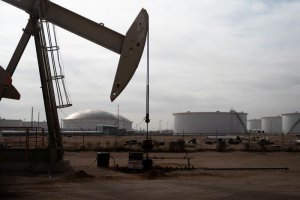Goldman Sachs forecasts a decline in Brent and WTI oil prices to $62 and $58 per barrel, respectively, by December 2025, and further to $55 and $51 by December 2026.
These projections are based on two key assumptions: that the U.S. economy will avoid a recession due to significant tariff reductions set to commence on April 9, and that OPEC+ will moderately increase supply with two increments of 130-140kb each in June and July.
The investment bank also outlined scenarios where oil prices could deviate from these projections.
In the event of a sharp reversal in tariff policy, oil prices could exceed Goldman Sachs’ current estimates.
On the other hand, if the U.S. enters a typical recession while adhering to their OPEC baseline, Brent oil could fall to $58 per barrel by December 2025 and to $50 by the following year.
In a scenario where global GDP growth sees a slowdown, Goldman Sachs estimates Brent could drop to $54 per barrel by December 2025 and to $45 by December 2026.
“We estimate a similar price path assuming our GDP baseline and a full unwind of the 2.2mb/d of OPEC+ cuts,” strategists led by Yulia Zhestkova Grigsby wrote in a note.
In a more extreme scenario, combining a global GDP downturn with a total unwinding of OPEC+ cuts, which would in turn discipline non-OPEC supply, strategists project that Brent oil could fall to just under $40 per barrel in late 2026.
However, the strategists note that oil prices are “unlikely to fall well below $40/bbl on a sustained basis,” citing two reasons.
Firstly, U.S. shale production is likely to provide a stronger price floor at lower levels, and secondly, any potential U.S. recession in 2025 is not anticipated to be severe, partly due to the absence of significant financial imbalances in the private sector, strategists said.













